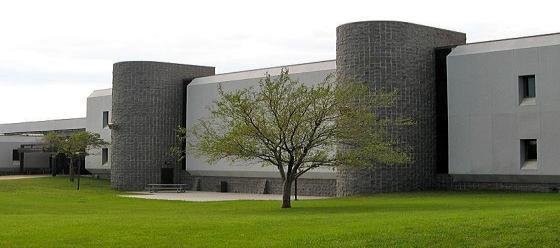Since the founding of our communities, organizations, businesses and citizens have stepped forward to build and serve their community. Click on any of the logos below to learn about those who made this website possible! If you would like to learn about becoming a sponsor CLICK HERE!
Nobles County, MN
County in Southern MNNobles County was first occupied by the Sisseton Indians. The first white man to set foot on the land was Joseph Nicolas Nicollet, who came to map out the area in 1842 and named the lakes Okabena (there was also in East Okabena), Ocheyedan and the Kanaranzi River. The first settlement was near Graham Lakes. Township surveys were run along the Iowa Border in 1852, laying out the Lake and continued eastward. The territory was organized in 1849. In 1856, there was a great influx of settlers into Minnesota. The panic of 1857 stopped that. During this period only trappers visited Nobles County. Trapping was profitable during the early days. Nobles County was created by the Minnesota Legislature on May 23, 1857, just before the full force of the panic was felt. Settlers were also discouraged from coming by the Indian Massacre of 1857. At this time, a band of Sioux has ruthlessly murdered settlers in Spirit Lake and along the Des Moines River in Jackson and Cottonwood Counties. The few whites in the area were understandably reluctant to stay.
County Government did not start until 1870. The first railroad was built in 1871 from Mankato through Worthington to LeMars, Iowa. This later became the Chicago, St. Paul, Minneapolis and Omaha. During the summer of 1867, a mail route was established from Blue Earth City through the Graham Lakes settlement to Yankton, South Dakota. In January, a Post Office was established in each settlement. The population in the spring of 1870 was 117 and nearly doubled by fall.
In 1871, a group of men from Toledo, Ohio organized a company to locate a colony of settlers in some western county. After traveling 20,000 miles in the Midwest, they decided on Nobles County and by the spring of 1872, hundreds of people came in and took up land. The mail was brought to Worthington by train and an overland route was established from there to Sioux Falls. Post offices were established in Dewald (one mile northeast of Rushmore), Adrian and Westside Township. Worthington became the County Seat in 1873. The railroad gave the county a block of land in the heart of the City of Worthington to be used for a courthouse, which was built in 1877. The building was replaced in 1894 by a stately building of red brick and massive stone foundation featuring a tower and elaborate cornice work.
The census of 1861: 11 families, 35 persons, (3 from Norway, 3 from Bavaria, 1 from Ireland and the rest from the eastern states).
In 1880, the population was 4,435. In 1895, the population was 11,905 and in 1970, the population was up to 22,959.
The Indians and the early settlers found a beautiful land covered with prairie grass and wild flowers. There were ducks, wild geese, brant, curlew, pelicans, prairie chickens and some big game. Land sold for eight to ten dollars an acre but some Okabena lakeshore brought $50.00 to $100.00. The government gave the railroads the odd numbered sections of land adjoining the railroad to encourage the building of the railroads.
From 1873 to 1879 the settlers suffered through plagues of grasshoppers and terrible winters. The January 7-8-9 blizzard of 1873 was one of the worst storms that covered the Northwest area. Seventy lives were lost—four in Minnesota.

- County: Nobles County, MN
- Region: Southern MN
Destination Nobles County, MN
- Sponsors
- Towns
- Businesses
- Community Organizations
- Faith Organizations
- Festivals and Events
- Points of Interest
- Veterans
Learn how to contribute to any of the above categories.
Towns of Nobles County, MN
The small towns of the Midwest are rich in history and a great way of life! Below you can visit and learn about the small towns we call home! Towns that have their name highlighted have become FEATURED TOWNS. Businesses/organizations from these towns have stepped forward as SPONSORS enabling us to include (or will include as acquired) stories and website links to ALL their community organizations (chambers, groups and departments, etc.), stories and website links to ALL their points of interest, annual festivals/events and stories done about their citizens, veterans and faith community. To learn how to become a featured town CLICK HERE!
Businesses of Nobles County, MN
The businesses of our towns are truly the lifeblood of each community, click on any businesses below to learn about them, to learn how to add your business to your town and county page CLICK HERE!
Community Organizations of Nobles County, MN
Small towns and rural communities throughout the Midwest are looking for ways to strengthen their economies, provide better quality of life, and build on local assets. Here you will find the organizations that stabilize, preserve, and revitalize the small towns and rural areas alike. To submit your organization to be included on your town and county page CLICK HERE!
Events of Nobles County, MN
The small towns of the Midwest have long shared pride in their communities through festivals and events! Citizens from each community, working together, continue to offer entertainment options that not only appeal to their citizens, but visitors to their community! Below you will find festivals and events you are sure to want to attend! If you would like to have (DST) include an annual festival or event on your town and county page CLICK HERE!
Faith Organizations of Nobles County, MN
Throughout the years faith organizations have not only been an essential part of a town's religious life, but its community life. Below you will find stories about these organizations, If you would like to induct a faith organization to be added to your town and county page CLICK HERE!
Points of Interest of Nobles County, MN
The communities of the Midwest have a lifestyle unique to their region — rich in history and points of interest like no other! Below you will find points of interest you are sure to want to visit! To nominate a landmark, historic location, museum, etc. as a point of interest on your county and region page CLICK HERE!
Veterans of Nobles County, MN
Veterans come from many walks of life and whether a veteran has severed two decades ago or two days ago, they have made our freedoms possible. Below you will find stories about many who have served. If you would like to nominate a veteran to be included on your town and county page CLICK HERE!

























































































